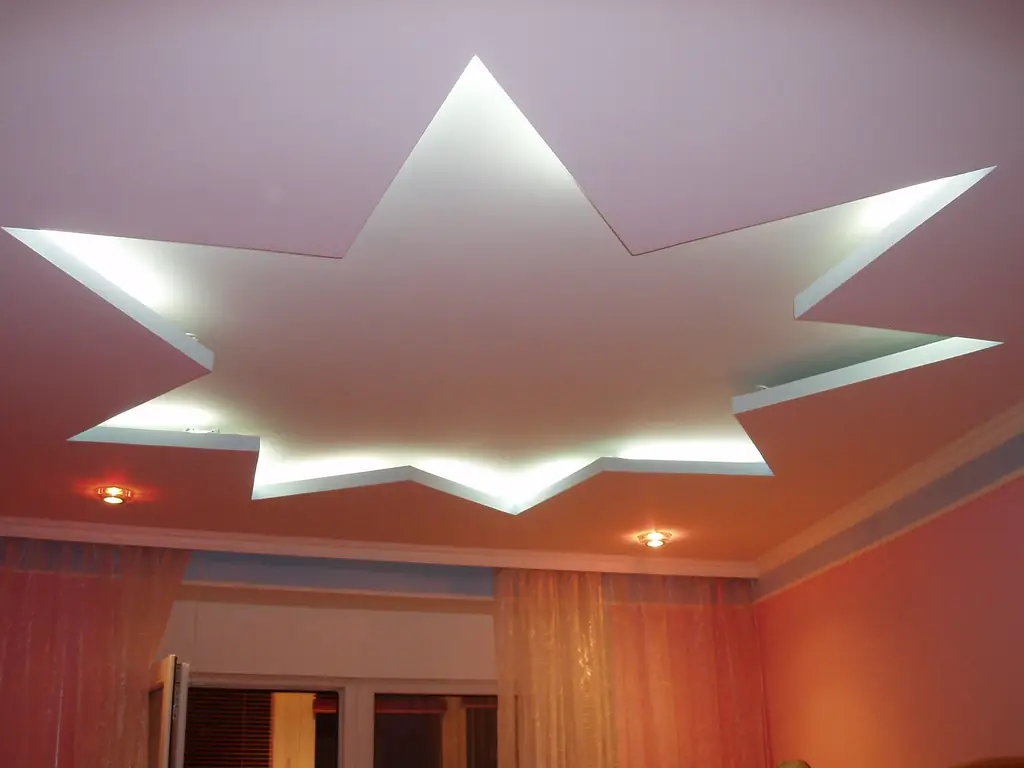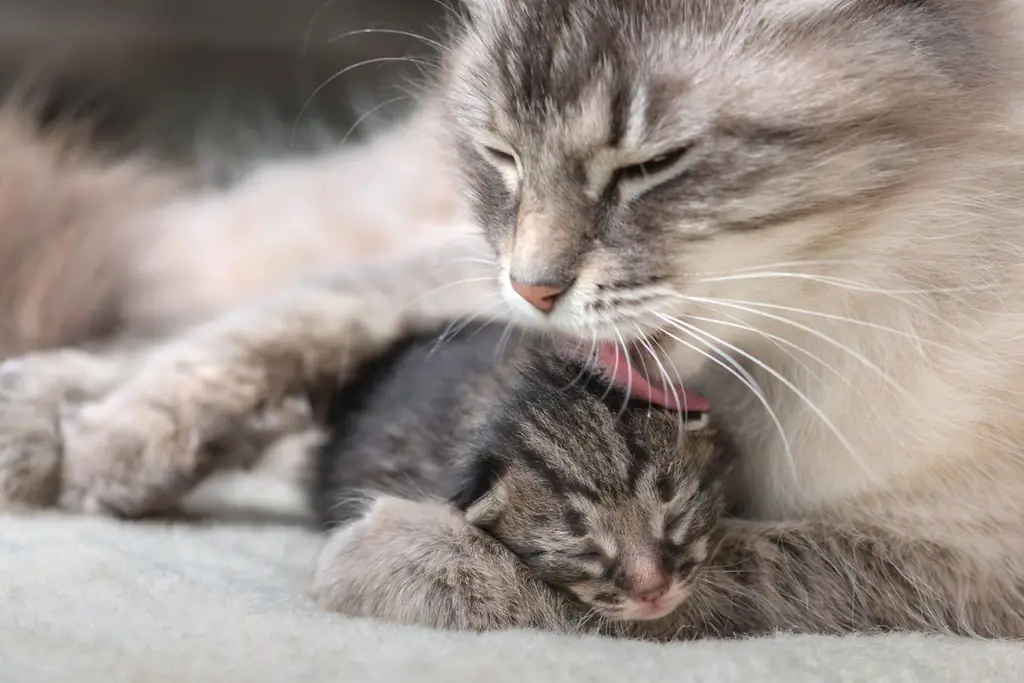
Table of contents:
- Stylish alternative to wallpaper! Rules for self-application of decorative plaster
- The first step to work: choosing the right materials and preparing the surface
- Decorative plaster application technology
- How to apply decorative plaster: sequence of actions
- Various plastering technologies
- A few more ways to apply decorative plaster
- Where else can you apply decorative plaster?
- Author Bailey Albertson [email protected].
- Public 2023-12-17 12:53.
- Last modified 2025-01-23 12:41.
Stylish alternative to wallpaper! Rules for self-application of decorative plaster

You have probably already convinced yourself from your own experience, and more than once, that almost any construction and repair work is quite easy to do on your own. Room decoration, in particular wall decoration with decorative plaster, is no exception. The technique of such work is now very common, and therefore is available to everyone.
The preparation of a solution for decorative plaster no longer requires either skill or time from you: the modern market offers a huge range of ready-to-use mixtures. Therefore, in today's article we will touch on the types and methods of application.
In addition, it is very important to properly prepare the surfaces for application and to stock up on the necessary materials and tools in a timely manner.
Content
- 1 The first step to work: choosing the right materials and preparing the surface
- 2 Technology for applying decorative plaster
- 3 How to apply decorative plaster: sequence of actions
- 4 Different plastering technologies
- 5 A few more ways to apply decorative plaster
- 6 Where else can you apply decorative plaster?
The first step to work: choosing the right materials and preparing the surface
The main thing to consider: the surface on which you will apply the plaster must be absolutely flat. Any defects and deformations are excluded, therefore, first assess the state of the structure, and, if necessary, restore them. Clean the wall from dirt, dust, grease stains, and keep it dry.
A primer will help you in the preparatory work. Apply it before you start plastering, and thus protect the decorative layer from the effects of temperature changes and exposure to moisture.
There are different types of plaster, and the types of primer under it are also different. If the substrate is weak and prone to shedding, treat it with strengthening compounds. Gypsum plaster or drywall must be treated with deep penetration soil.

Now let's decide on the necessary tools for work. You will need:
- spatula, preferably size 80;
- tray for paint - cuvette;
- two-inch brush;
- malkovitsa measuring 40 X 140;
- thread roller size 150;
- 2 sponges, bath or coral, rags.
Remember that for priming and plastering work, you need to ensure the room temperature is from +5 to +30 degrees and the minimum humidity.
Decorative plaster application technology
Now that the surface is prepared, we proceed to the direct application of the material. There are several methods of application, and they depend on the types of plaster and its consistency. Therefore, you should consider the following factors:
- liquid plaster is not very convenient to work with, since it is completely ready for use and cannot be diluted;
- if the plaster is with a large filler, for example, crumbs, then it can only be applied by hand;
- diversified crumb in the composition further complicates manual application;
- plaster mixtures that dissolve with water are less toxic, but more susceptible to external influences.

There are a few more important points to remember. These include the following:
-
- On porous concrete or plaster, the applied decorative composition will dry much faster than on oil paint, plastic or polyurethane foam;
- Water-based decorative coating can deform the surface of wood, plywood, chipboard and OSB during operation;
- To cover the surface of the base with defects, a larger amount of plaster will be needed, since the layer must be thicker than usual;
- If you are applying a water-based coating to ferrous metals, please note that rust stains may develop after curing.
Almost all types of decorative art plasters cure at the same time. Setting occurs in 3-5 hours, drying - in 1.5 days, the final hardening of the layer - about 9 days.
We proceed to applying the plaster. First, cover all adjacent surfaces with masking tape: baseboard, wallpaper, painting. Apply decorative plaster from one corner towards the other. If the surface of the wall has significant deviations, then you will need to make plaster on the beacons.
How to apply decorative plaster: sequence of actions
To make it easier to understand the process and implement it, we will break the work performed into several stages and consider each of them in detail.
1. Priming of the surface ensures the reliability of the entire subsequent coating, therefore it is mandatory. The soil mixture is applied using a maklovitsa (make sure that the hairs are strong enough), and as carefully as possible. Prints must not be allowed on the wall surface, otherwise they will be visible. After the primer is dry (at least 24 hours), proceed to the next step.
2. Now the main layer is applied, right now the texture of the picture will be formed. The mortar is placed on the wall with a polished metal trowel, paying attention to the fact that the layer should be thin. To get a structural abstract drawing, paint in different directions so that each new one overlaps the previous one.

3. After the final solidification of the base, proceed with the application of the finishing layer, or ironing. This will give the resulting pattern a richness and depth. Apply with small strokes the working compound to a limited part of the wall. After the plaster has set, place the trowel flat against the base of the wall and polish the surface with force until a glossy shine is formed. Its quality will depend on the type of solution. Thus, treat the entire surface of the wall.
4. After 24 hours, your wall is completely finished. If you wish, you can make the final touch: rub the surface with a wax composition, which can not only add additional gloss, but also improve the quality characteristics of the texture. The wax is applied to the wall with a trowel, in a thin layer, with light movements.
Now the walls of your apartment are covered with an original pattern, and it is especially pleasing that you are the author of this magnificent work.
Various plastering technologies
There are several different types of decorative plaster, and the technologies for their application, as well as tools, allow you to achieve different textures. For this, a brush, embossed roller, spatula, trowel or spatula are useful. Lime and sand plaster will allow you to achieve a wide variety of fantasy textures.
- Wave. Make notches on the previously rubbed, fresh plaster, moisten it with water and apply a layer of mortar in strips, either straight or curved - as your desire suggests. Use a spatula to undulate the surface.
- Boulders. Apply a colored solution to the primer (make sure it is flexible enough). Smooth it out with a trowel and trim the surface with a hard brush. Hold the brush correctly against the wall at a 90 degree angle.
-
Travertine. On a previously plastered surface, a tinted solution is applied with a thin layer, in throws, after which it is smoothed with a half-trowel or a spatula.

types of decorative plaster - Furrows. To create such a texture, you will need a malka with semicircular, well-sharpened teeth, 3 cm wide and an intermediate step of 1.5 cm. Apply thick plaster to the primer and immediately smooth it out with a polisher. Apply a rule and form the grooves with a small one, keeping it at a 45 degree angle.
- Fur coat. There are many ways to achieve this effect: throwing through the net, spraying, shaking off the brush. Let's say you are using a grid. The cross-section of its cells should be 1 cm. Pull the net over a 1 X 1 meter frame, lean it against the ground and throw plaster through it with a spatula. Apply the mortar with equal force to obtain a uniform finish. It is even easier to spray a fur coat: put the solution on a broom, and hitting it on a stick, spray it on the wall surface. Remember to stir the solution.
- Flakes. This texture is obtained by spraying liquid plastic plaster.
A few more ways to apply decorative plaster
There are several more fairly simple ways to turn a layer of plaster into an original textured coating. For example, apply a solution of sour cream consistency to the primer, level and lean a regular sponge at regular intervals. Soak a sponge in soapy water to prevent it from sticking to the surface.
Give the terrasite plaster a stroke texture. It needs to be done on a fine-grained set solution. A simple comb will help you with this, with which you make notches. The treatment can be started 1-5 hours after the application of the plaster layer.
You will achieve the effect of a split stone by hammering the tongue into the already hardened mortar. The indentations in the places of the chips will give the necessary surface graininess.
Another way to perform plastering is spraying. In this case, the composition is applied to geometrically complex surfaces, slopes and decoration elements. This method allows you to increase the aesthetic effect by using plasters of different fractions. For example, the thickness of the composition is taken as a basis of 3 mm, and for slopes and additional elements - 1 mm. To do this, you need to stock up on a special spraying device.

The spraying process on each wall is performed continuously, from top to bottom, covering the previous one with a new layer. If you need to stop working for a while, stick masking tape along the end of the layer. The adhesive tape is removed only after the plaster has been applied and its structure has been formed.
Where else can you apply decorative plaster?
Did you know that if you approach the process creatively and creatively, then decorative plaster will help transform your home? In this part of the article, you will read the recommendations and see a photo of furniture and interior items finishing with decorative plaster. By simulating wood carving, you will radically change the look of, for example, an old shoe cabinet.

Here's what you need for this:
- plastic napkin 1.5 mm thick;
- rubber spatula, medium;
- decorative plaster (domestic plaster will cost less, and the quality is in no way inferior to imported ones);
- acrylic paint;
- double-sided adhesive tape.
First of all, you will need to prepare a stencil. To do this, apply a pattern on the back of the napkin and cut it along the contour with nail scissors, a blade or a knife.
Prepare the surface of the cabinet: degrease it and rub it with a sandpaper. Attach the stencil with double-sided tape and carefully apply the plaster with a trowel. Until the mixture has set, remove the stencil. Do not worry about tails remaining on the plaster: they will be removed later.

After the mixture is completely dry, sand it, but not too thoroughly: slight irregularities better imitate the carving. Wipe the surface with a clean rag and paint to match the wood color. You can apply grooves on wet plaster, or when painting - lines characteristic of oak bark, in a darker color.
At the end of these works, the product can be opened with varnish or wax and polished with a piece of woolen cloth.
We have told you about the simplest ways to apply decorative plaster. We hope that our master class will help you in your work, and in your comments you will tell about your practical experience. We look forward to your questions and suggestions, and will be happy to discuss your options for using decorative plaster. Easy work and good luck with your creativity!
Recommended:
Growing Peas In The Open Field, Agricultural Technology + Photo And Video

Detailed recommendations for growing peas at their summer cottage. Preparing the soil, germinating seeds, caring for the plant during growth. Disease and pest control, harvesting
How To Putty A Plasterboard Ceiling And Plaster, How To Patch Up Joints + Video

Step-by-step instructions for puttying and plastering drywall wallpaper for painting and wallpapering. Materials and tools required for work
Childbirth In A Cat: How To Understand That She Has Begun To Give Birth, What Are The Signs Of The End Of The Process And How Long Does The Birth Of Kittens Take, Video

Stages of labor in a cat. The optimal age of the animal for childbirth. How to help your cat during and after childbirth
How To Remove Scratches From The Screen Of Technology: How To Remove Them Yourself, Reviews, Video

Damage to gadget screens and how to fix them. Improvised and special means, reviews. Preventing scratches on screens and plastic parts
How To Process A Greenhouse From A Whitefly: Means, Timing, Reviews And Video

How to treat a greenhouse from a whitefly. What folk remedies can be used to combat whitefly
